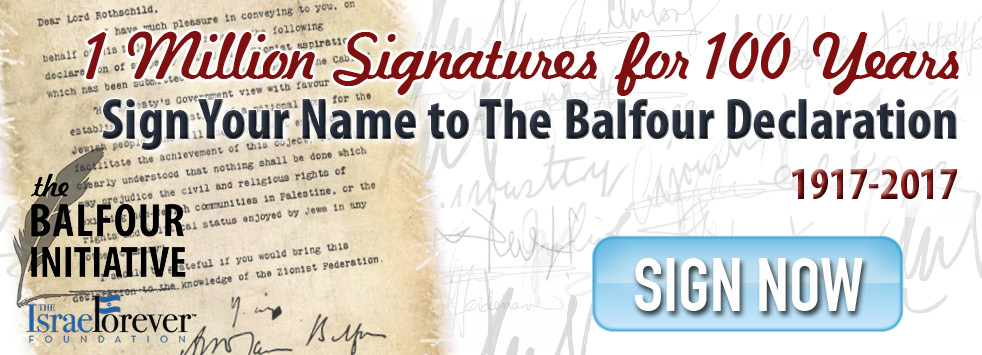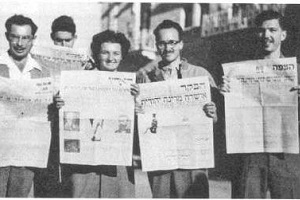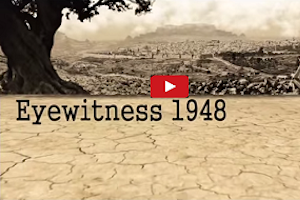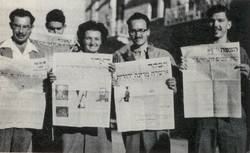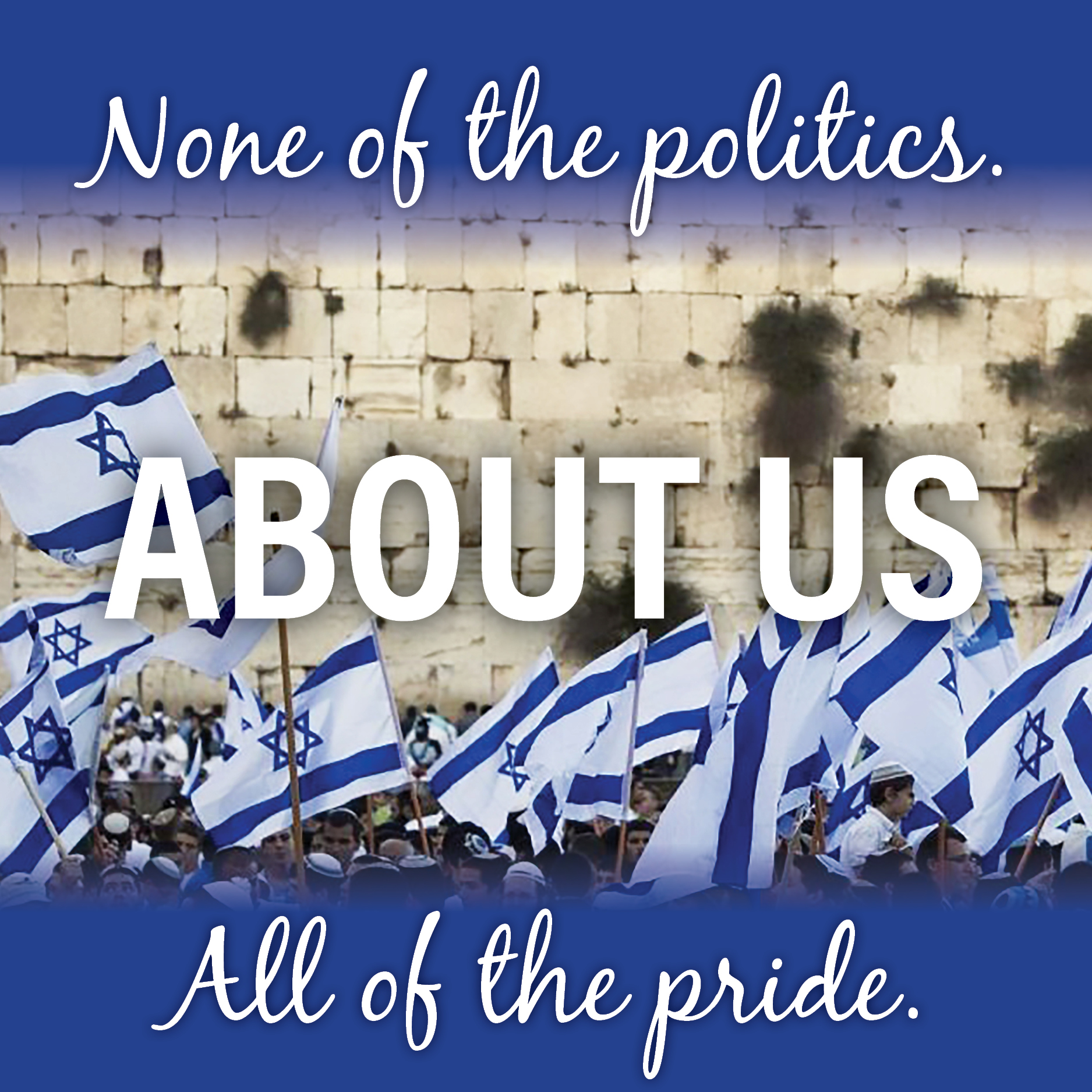Remembering the heroic saga of Gush Etzion, and the Lamed Heh
By Robert Werdine
The days following the partition vote of November 29, 1947 found the folk of Gush Etzion in celebration leavened with sorrow. The diaries of those inside the bloc tell the story:
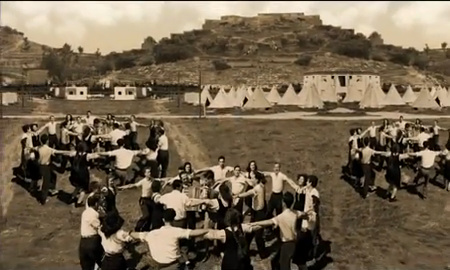
"There is the sound of rejoicing and salvation among the hosts of Israel. The dream of many generations is being realized before our eyes. The State of Israel will soon become a reality, transforming the very foundations of our life in this country and our standing among the nations of the world…About midnight we heard the first news of how the voting had gone. A wave of joy swept through the village. We sang songs of rejoicing on the surrounding hillsides and danced in the farmyard…”
And, “There is rejoicing in our hearts, but our joy is not complete. Our kibbutz is one of more than thirty Jewish settlements which have not been included in the borders of the Jewish state which is to arise…The painful partition of the Land causes every faithful Jew to feel a sense of distress in his heart. Jerusalem, the capital city of the Land of Israel, which has through the generations been the object of the yearnings and hopes of Israel, remains outside the borders…Nevertheless, we will not forget Jerusalem, nor Hebron nor Shechem nor hundreds of other Biblical sites that must be redeemed."
Zipporah Porath, a Jewish-American student who came in the fall of 1947 to study at the Hebrew University, wrote home to her parents about her visit to Etzion Bloc in October 1947:
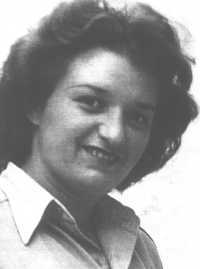
“About my tour to Gush Etzion. I went with G.I. Dov and Oded, a Sabra who lives in our student house and goes out of his way to bring the Americans closer to what he calls the real Eretz Yisrael [Land of Israel]. Oded, who served as our guide, joined the group when it went on hityashvut [settlement on the land] and was able to point out what had been accomplished in the two months since he had been there….The only problem is that they are smack in the heart of Arab territory. So what sense of security can there be?"

Indeed. Situated south of the City of David (Jerusalem), north of the City of the Patriarchs (Hebron), east of the Valley of Elah, and west of the Judean Desert, the settlement had seen two previously unsuccessful attempts to put down communal roots, in 1927 and 1935, both aborted in the face of Arab violence. A third attempt in 1943 to settle Kfar Etzion took hold, the young pioneers persisting in the face of the harsh environment, scarcity of resources, and Arab hostility.
In time, the neighboring kibbutzim of Massuot Yitzchak, named in honor of the chief Rabbi Yitzchak Herzog, and those of Revadim and Ein Tzurim were established nearby, populating the bloc to some 470 at the time of the partition vote in late 1947, which placed them outside the Jewish state.
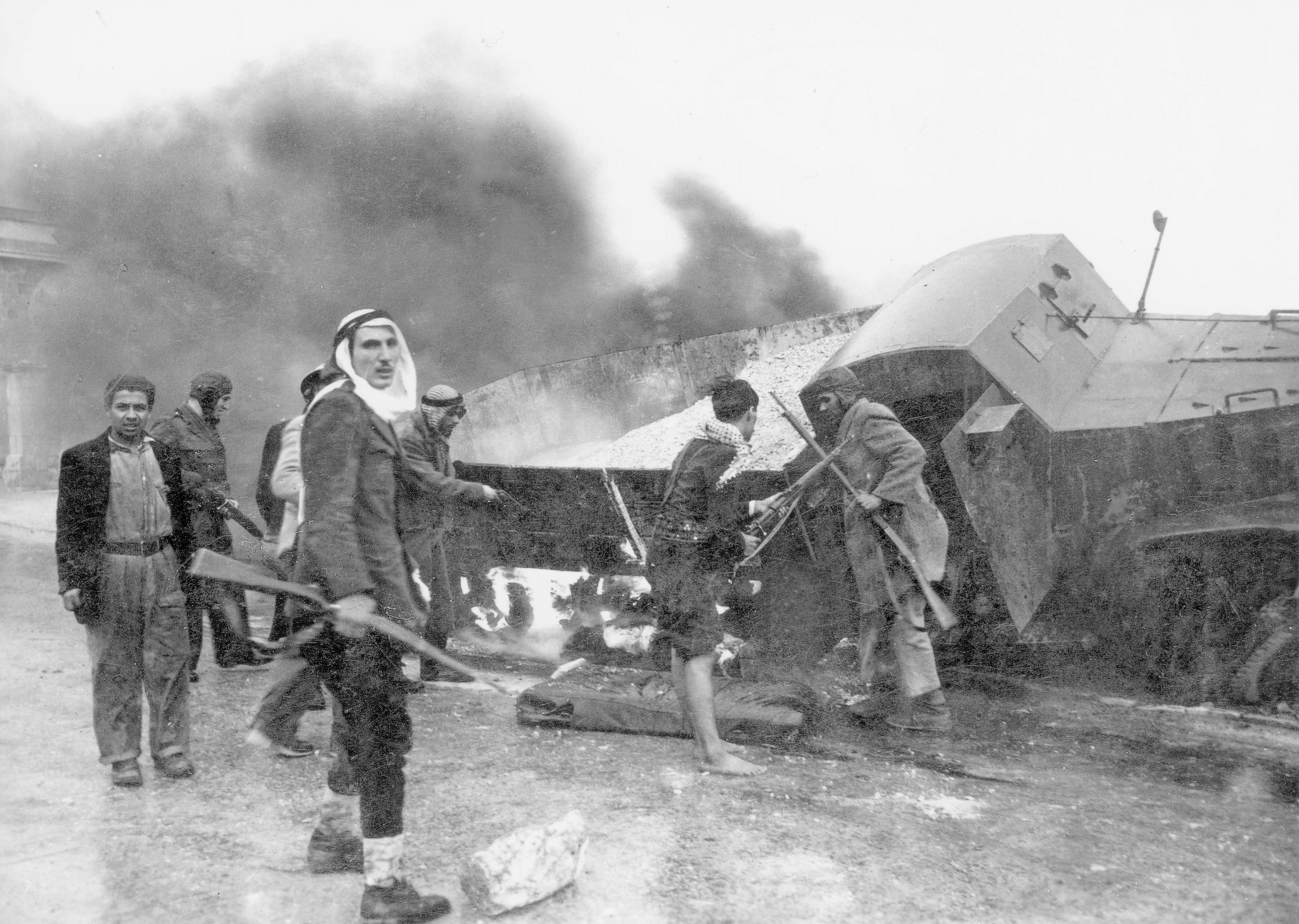
In the days following the vote, the Arabs had already begun to lay siege to the bloc, on December 11 successfully ambushing a four-vehicle supply convoy in which ten of the bloc’s defenders were killed.
Among the 10 were one of Kfar Etzion’s founding fathers, Shalom Karniel, formerly the famous leader of the Hashomer Hadati youth movement in Krakow, Poland. Just a few days earlier he had written,
“Our homeland is the value without which we can expect ruin and constant degradation – we, in the land of our forefathers, and all the more so, our millions of brothers in the Diaspora who cry out for the Redemption."
Gush Etzion wept, and buried her slain. So read a Kfar Etzion diary:
“Mourning. The sound of weeping is heard in the settlement. Two of our children have lost their fathers. Kfar Etzion’s first orphans…Psalms were recited. The grave diggers had performed their task. At evening we laid our fellow-members to rest. We hurried to wash before the Sabbath. The glow of the Sabbath candles and the knowledge that it was Hanukka seemed to lessen our grief a little..."

Colonel Danny Mas
Yet the bloc’s defenders defiantly banished all thought of withdrawal, and spent their time gearing for battle. Charismatic Palmach commander Danny Mas had been dispatched from Jerusalem to lead and organize the bloc’s defenses, and he attended these with his customary flair and attention to detail. On January 5, in anticipation of further hostilities, all mothers and children were evacuated from the bloc, leaving one defender to note:
“The departure of the mothers and children has left an aching void in the village. The family quarters are sad. Everything recalls the life of the families that have now been rent in two…Kfar Etzion, humming with activity, thriving with its stone buildings, its gardens, now has the appearance of a fortified military camp"
On January 8,1948 Mass was given a new command in Jerusalem, and was replaced by by Uzi Narkiss. On January 14, the long-awaited Arab assault was launched in earnest.

Abd al-Qader al-Husayni
It was led by the famed Palestinian war-chief Abd al-Qader al-Husayni, Jerusalem front commander of the Jaysh al-Jihad al-Muqaddas (“Army of the Holy War”), the Mufti’s primary proxy-army in Palestine. It was to consist of a 400 man assault against Kfar Etzion supplemented with simultaneous attacks on Masuot-Yitzhak and Ein Zurim, with 300 troops allotted to attack each kibbutz, and the attackers outnumbering the defenders by about seven or eight to one.
It was to be the largest Arab attack on a Jewish settlement to date, the attackers oozing confidence, and bringing along hundreds of empty bags for the anticipated loot.
Etzion Bloc was completely isolated.
They had no route of retreat, and defeat would have meant the forfeiting of the settlement and their lives as well; such grim knowledge weighed on the shoulders of every defender.
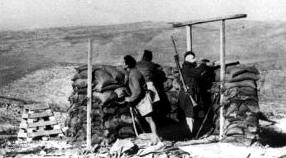
At Kfar Etzion, the Palmach defenders took up positions along the flanks of the attack routes on the very rim of the settlement–thus allowing the attackers to come dangerously close before opening fire.
The attackers, confident that they had caught the settlement unawares, mobbed ever closer to the entrance shouting “allahu akbar.”
A mere thirty yards from the gates of the settlement, a Palmach sniper nabbed the leader of the assault as expertly as a pool shark sinks an eight-ball in a corner pocket; this had the virtue of halting the momentum of the assault while the attackers paused to reflect upon their new-found danger. The teams of Palmach defenders, taking their cue, now opened up on the vanguard of startled attackers with everything they had, throwing them into fearful confusion.
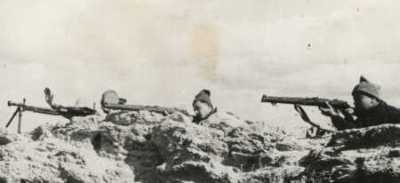
The first wave of the attack now fell back in disarray, and the second wave, inheriting the confusion of the first, met a similar fate. By nightfall, the Arab attack of 400 had been contained by a few Palmach squads numbering no more than thirty meagerly armed defenders.
The situation in the other two settlements told a similar story. In each instance the Arab attackers got within striking distance only to be ambushed by the defenders, who placed their Palmach squads at wide intervals to bluff the attackers into thinking that they were far more numerous than they were.
It worked; at first fire the Arabs, thinking they were about to be surrounded and cut to pieces, took to their heels and legged it back down to the plain, leaving some 150 dead behind them and a similar number of wounded.
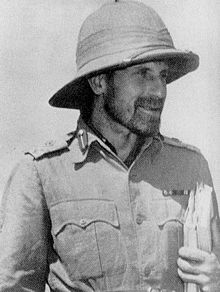
Orde Wingate
The defenders reckoned a loss of three of their own. By bluff and guile, combined with expert timing and marksmanship, the defenders had outfought their attackers to a wildly disproportionate casualty exchange ratio. And saved Gush Etzion.
The few defeating the many; would that Orde Wingate had lived to see this magnificent feat of arms at Gush Etzion. He would have liked that one.
The aftermath of the battle found the defenders victorious but exhausted of supplies and ammo. As all paved roads connecting the Gush to Jerusalem were blocked by armed gangs of Arabs and villagers, the only way to get the needed supplies in for now was to move them on foot with backpacks through the night circumventing British police posts and hostile Arab villages trekking through the steep slopes of the Judean hills.
Colonel Danny Mas, former commander of the Gush, set out from Hartuv at night with a platoon of 38 to resupply the settlement. Two soldiers accompanied a third wounded man back to base, leaving thirty-five to continue the journey. Harsh terrain and the steep slopes combined with the heavy weights on their backs to slow the advance. By 6 am, the group stumbled upon two Arab women gathering firewood; the women, it is assumed, informed on the platoon to an Arab commander at Kafir Tsurif, who them set out with a contingent of troops to engage them.
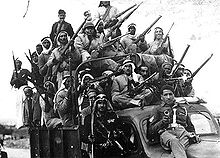
As the Arabs approached, Mas ordered his men to hide among the boulders, thus rendering them invisible to the Jewish spotter plane trying to locate them.
Betrayed by the daylight, a mob of 2000 Arab soldiers and villagers fell upon them with unchecked fury. The platoon resisted to the last bullet, all killed, their bodies looted and cruelly dishonored beyond recognition.
The tragedy shook the confidence of the Yishuv all throughout the land, and cast a dark shadow over the spirits of the Gush, whose isolation was brought home to them more forcibly than ever. The loss of Mas hit the bloc particularly hard, for he was beloved by all. As Uzi Narkiss, the Gush’s head commander later wrote,
“After the funeral, the isolation was emphasized and clarified in all its starkness. With lowered heads and heavy hearts, we felt that we had lost live contact with Jerusalem, and our loneliness was underlined in all its cruelty."
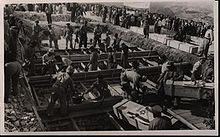
Zipporah Porath wrote her parents on January 19, 1948 of the loss of her two friends among the thirty-five,
"Jerusalem’s face was sad today. It isn’t easy to accept the fact of death, and even harder when you know personally many of those who died. But thirty-five boys is heartbreaking, all young wonderful people. I can imagine that the death of Moshe Pearlstein from New York, my friend Marsha’s brother, must have created a wave of shock. The first American to be killed here. The American group here is very grieved. Moshe was a great guy.
Oded was also among the dead. You remember I mentioned him in earlier letters. He was one of the first sabras to befriend me. In fact, when I first arrived he took me on an excursion to that very area and hiked me over those hills to visit the kibbutzim in Gush Etzion so I would learn to love the land as he did. Just before he left for this assignment he came to say “hello” and we talked at length as always…”
What the loss of the Lamed Heh really cost the the Yishuv was, in the truest sense, imponderable–the laughter unheard, songs unsung, poetry never written, the sons that were never born, and all the valor so cruelly cut down in the flower of youth.

Lamed-Heh 370. (photo credit:Gush Etzion Memorial Association)
Like the five American Sullivan brothers who volunteered for service, and perished together when their ship sank in the Pacific during World War two, the Lamed Heh became a symbol to the Yishuv and the Haganah for the “purity of arms” that was to become the guiding ethos of the future IDF, David Ben Gurion noting that he did not know “if there was in the Israel Defense Forces or in any army in the world, a platoon of such magnificence of humanity, heroism, innocence and richness of soul as was this platoon.” He believed that the platoon should not be commemorated only with stone monuments, but rather “in the true and ongoing will to be as much like them as possible.”
***
The epilogue to the tragic saga of Gush Etzion is soon told.
After continuing to bravely resist for four more months, Gush Etzion, hopelessly surrounded and starved of arms and supplies, finally fell to an all-out assault by Jordan’s well-trained Arab Legion on May 14, 1948. (This second battle of the Gush was the subject of one of my first articles here at the TOI. It can be accessed here.)
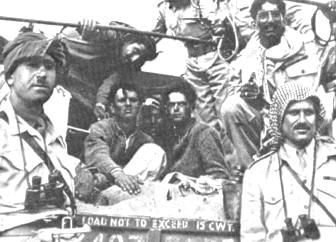
Jewish Prisoners
After slaughtering all but four of the 133 prisoners, the local Arab militiamen and Legionaires looted and razed all of the houses and buildings of Kfar Etzion, as they were to do to the other three settlements of the Bloc, “leaving not one stone upon another,” so said a local commander, “to prevent the Jews’ return to the bloc.”
But Gush Etzion remains.
Reclaimed in the aftermath of the 1967 victory, rebuilt and lovingly nurtured back to health, it is today the jewel in the Path of the Patriarchs.
I have never visited Gush Etzion. But I know it.
Though far away, I am there, and I see its indomitable spirit as clearly as if it were before me:
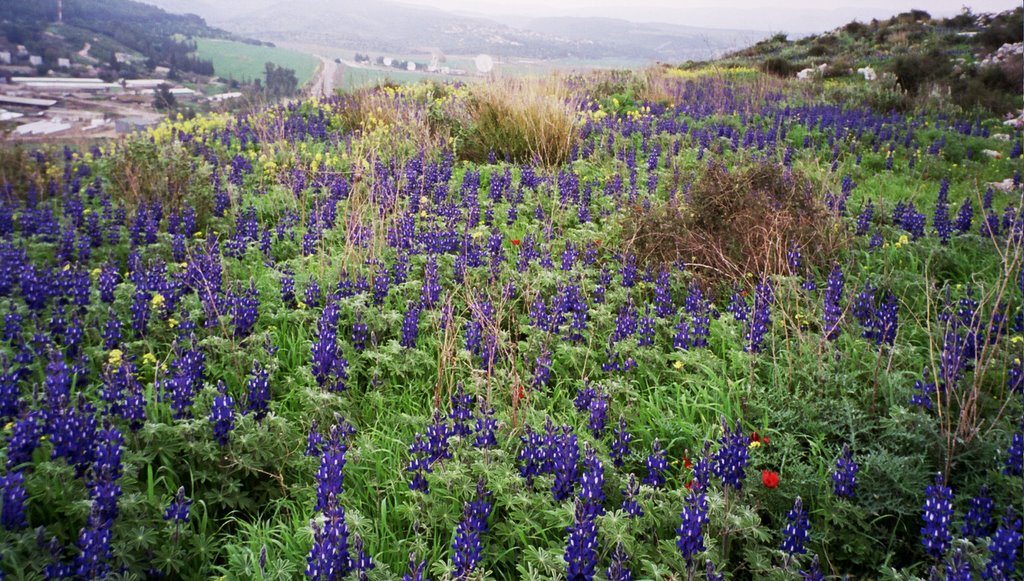
Hills of Gush Etzion - Lamed Heh
- I see it in the faces of the pioneers who were drawn irresistibly, in the face of every hardship, to settle and resettle this stretch of land.
- I see it in the bloc’s intrepid defenders, who by guile and sheer élan outfought and resisted their far more numerous attackers long after reason would have dictated a withdrawal or surrender.
- I see it in the sacrifice of the Lamed Heh, and in those settlers who, when restored to the land by providence, re-planted the seeds of life in the land ‘round the Lone Tree, and made it bloom and bustle again.
- And yes, I even see it in the blog posts of TOI bloggers like Varda Epstein and Zahava Englard, who plunge into controversy spiritedly and unafraid of censure, and whose pronouncements proudly defending the land they and their families inhabit stand as a rebuke to all those who would call this “occupied” land.
***
A poll some years ago found that some 50% of Israeli adults and some 65% of young adults had never heard of the Lamed heh. This is sad. This was also lamented by the surviving relatives of the fallen platoon on the 60th anniversary of the tragedy in 2008 in an article in Ha’aretz.
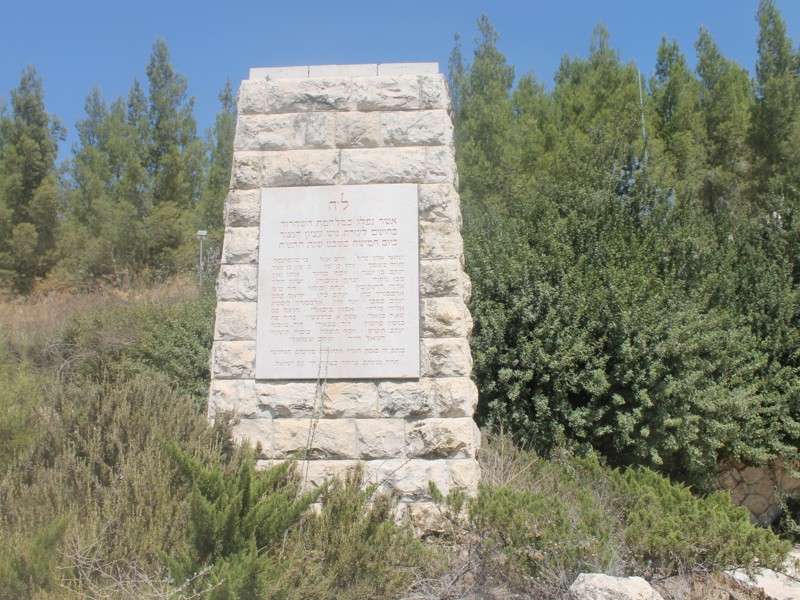
“It’s hard to find signs any more of the kind of spirit the fighters of that time had,” said Shlomo Doron, whose brother Alexander Lustig was in the platoon, and who attended the funeral of the Lamed Heh both at Gush Etzion and when they were reinterred at Mount Herzl.
But he nonetheless saw reason for consolation. “My comfort,” Doron said, “is the existence of the State of Israel, for which the Lamed Heh gave their lives, and in my son, who bears my brother’s name.”
Robert Werdine lives in Michigan City, Indiana, USA. He studied at Indiana University, Purdue University, and Christ Church College at Oxford and is self-employed. He is currently pursuing advanced degrees in education and in Middle Eastern Studies.

